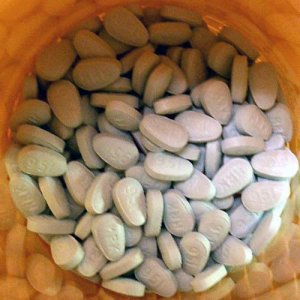
By: Bev Sykes
Opioid Epidemic
Even though the opioid epidemic was declared a public health emergency on October 16, 2017 by the US Government, opioids have been a problem since the 1990’s. It has gotten progressively worse as more and more patients are being prescribed opioids for every category of pain even if it’s not warranted. The issue with patients being addicted to opioids is that they are at a higher risk for addiction to other deadly street drugs such as heroine and methamphetamine.
Massachusetts has the highest number of opioid related deaths in the US and the highest prescribing rates of opioids are in Boston.
Categories of Pain
There are many different subcategories of pain, but the three main categories are Acute Pain, Chronic Pain, and Neuropathic Pain.
Acute pain is short lived and usually only lasts for 3 to 6 months. Acute pain can be a result of tissue damage and/or injury. Chronic pain lasts longer than 6 months. Chronic pain can be a result of an underlying injury with or without an underlying condition. Neuropathic pain is more of a nerve pain, its felt as a tingling, burning, stabbing pain that can travel down the body. Neuropathic pain can be either acute or chronic depending on the condition.
Prevention
The issue with pain management is that pain is subjective to every patient. There is no true set medical procedure or test to assess the patient’s severity of pain. Healthcare professionals perform pain assessments, but they are subjective and a patient can say their pain is a 10/10 while they were sleeping prior to coming in to see them. It’s hard to differentiate and cases severe backlash from patients to question their pain level. Proper health screenings and assessments need to be completed by the patient’s physician to see what category of pain the patient is experiencing and what the best type of pain management is appropriate for the patient.
Different Types of Opioids
There are short and long acting opioids. The 5 main categories of opioids are:
-Hydrocodone (most commonly prescribed opioid in the US)
-Oxycodone (most commonly found in tablet or pill form)
-Codeine (most commonly prescribed as a cough syrup)
-Morphine (short acting opioid)
-Fentanyl (long acting opioid)
By: James_Seattle
Alternative Therapy to Opioids
-Interventional Pain Procedures
-Physical Therapy
-Rehabilitation
-Mediation
-Homeopathic alternaives/herbs
-Reiki
-Acupuncture
-Massage
-Chiropractors
Safeguards to Opioid Addiction
Since opioid are so highly addictive and gaining more and more popularity in the streets, different tools can help physicians decipher if opioids are the proper management for the patient’s pain.
-Urine drug screen can be performed on patients that seem like they are “pill-seeking” or “doctor/hospital shopping”. This is a tricky slope, patients can become very insulted and or agitated if they are questioned on their addiction, especially if they are abusing drugs. Certain physicians and hospitals have a protocol to drug screen every patient regardless of background or condition.
-Risk-assessment tools can be utilized to help physicians decipher if a patient is at a higher risk for opioid addiction and if opioids are the proper treatment plan.
-Prescription drug monitoring programs and National All Schedules Prescription Electronic Reporting Act is a database that physicians can utilize to plug in a patient’s name to see if the patient if a “frequent flier” or “doctor or hospital shopping”.
Treatment Options for Opioid Addiction
The government has increased their resources for improved and more availability of opioid rehabilitation and treatment centers. The government has also made it easier for patients to be accepted into these programs regardless of health insurances.
Other medications can be prescribed for pain management while the patient is recovering from addiction, such as:
-Anti-inflammatory drugs
-Antidepressants
-Antiepileptics
-Nerve Blocks
Also, there are medications that can be given specifically for opioid addiction:
-Methadone
-Buprenorphine
Naltrexone
The media does portray these types of medications in a poor light because they want the population to believe that the healthcare world is just changing one drug for another drug that the government can regulate and get money for.
Common Misconceptions of Opioid Addiction
By: Alan Levine
-The population is unaware that opioid addiction is a highly treatable illness.
-Nonfatal opioid overdose is a reversible condition, meaning a patient can be treated for it.
-There is not enough studies or tests performed on chronic pain patients, to see if opioids are truly the best option for this patients.
-The longer a patient stays on opioids the higher the dose they will continue to need to have their pain managed.
-Opioid addiction comes with multiple other side effects such as constipation, nausea, decreased sex drive, increased sensitivity to pain.
-Opioid epidemic has caused a lot of patients who do suffer from severe pain from receiving the proper treatment because of all the pill seekers who are abusing the system making it harder for these people to get the care and attention they need.
References
Jones, M.R., Viswanath, O., Peck, J., Kaye, A.D., Gill, J.S., & Simopoulos, T.T. (2018). A Brief History of the Opioid Epidemic and Strategies for Pain Medicine. Pain & Therapy, 7(1), 13-21.
Salani, D., Crenshaw, N.A., Owusu, B., & Gonzalez, J.M. (2018). Pain Management in an Opioid Epidemic: What’s Appropriate, What’s Safe. Clinical Reviews, 28(4), 40-47.
Sharfstein, J.M. (2017). The opioid crisis from research to practice. Milbank Quarterly, 95(1), 24-27.
Tolba, R., Meselhy, E., & Guerra, C.E. (2018). The opioid epidemic and pain medicine specialists: where to begin and what is next? Ochsner Journal, 18(1), 20-22.


